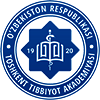HISTOLOGY, EMBRYOLOGY AND CYTOLOGY
According to state standards of higher education discipline “Histology, Embryology and cytology” included in “Pedagogy” wa “Health” and is divided into sections: cytology, embryology, general and special histology. Histology with cytology and embryology is a must and an important link in the biomedical sciences that provide fundamental theoretical knowledge on the basis of which the entire preparation of the future general practitioners. Histology – the science of the general laws inherent in the tissue level of organization and specific features of tissue resulting from their specialization in various organs. Knowledge of the normal structure of cells, tissues and organs is a prerequisite for understanding the mechanisms of adaptation under the influence of a variety of biological, physical, chemical, and other factors. The object of study are living and fixed cells and tissues, their images taken in light and electron microscopy.
Progress modern histology is largely determined by the fact that it is based on achievements in physics, chemistry, mathematics, computer science. Histology plays an important role in medical education, laying the foundations of scientific structural-functional approach in the analysis of vital functions of the human body in health and disease.
Aim and objective of the discipline
Aim of the discipline – Formation at students fundamental theoretical knowledge about the structural organization of the processes of life at the cellular, tissue and organ levels, the disclosure laws of their development and in this regard – the possibility of targeting them.
Objectives of the histology, cytology and embryology:
- To study the laws of the structure of the human body using microscopic techniques and ultramicroscopic study taking into account new scientific data, methodological and theoretical concepts necessary for the formation of clinical thinking GP.
- Instill students independent reading ability histological slides and electron diffraction, understanding, explaining and summarizing specific information about the microscopic and submicroscopic structures and their significance in gistofiziologicheskih processes in the body, meaning their application in the clinic.
- In process of the teaching to histologies, embryologies and cytologies to bring up beside student civil quality and medical ethical rates behaviours: neighborly attitude to labour, обязательность in performance of its debt, longing to deepened study of medical discipline into the name of good of the sick person, опрятность and neatness in conduct of documentation гистологических observations, understanding dug the knowledges on subject in the following общемедицинской and professional clinical preparation general practitioner.
Requirements to the level of preparedness (knowledge and skills).
After the end of the study histology, cytology and embryology bachelor should have knowledge:
- About the peculiarities of taking material for histology, tissue fixation methods;
- The spatial relationship of tissue composed of;
- Morphology of senescent cells, the mechanisms of their aging and death.
Must know:
- The features of the structure, function and age structure transformation of cells in a living organism;
- Age periodization of human life, general patterns and stages of prenatal and postnatal development;
- Sources of development, especially the structure and function, age-related hanges of the main types of fabrics;
- Characteristics of the tissue composition of all organ systems in the human
body to develop and mature;
- Understand the questions tissue regeneration and its characteristics due to age;
- Under a microscope to determine the structural elements of cells and tissues as part of bearings in their functional purpose;
- “Read” electron diffraction cells and non-cellular structure of tissues and organs.
Must have the skills:
- microscopic examination of histological preparations.
- Calculation of leukocyte in a blood smear, its analysis.
- The decision of situational problems.
- Reading of the scientific literature and writing short essays.
Histology relationship with other disciplines of the curriculum and its place in the health system
Histology, embryology and cell biology is closely related to disciplines such curriculum as medical biology and genetics, human anatomy, normal physiology, biological chemistry, pathological physiology, pathology, and other clinical disciplines. The subject is an intermediary, a bridge connecting biomedical fundamental disciplines studied in academic high schools and colleges, as well as in medical schools, with clinical sciences.
